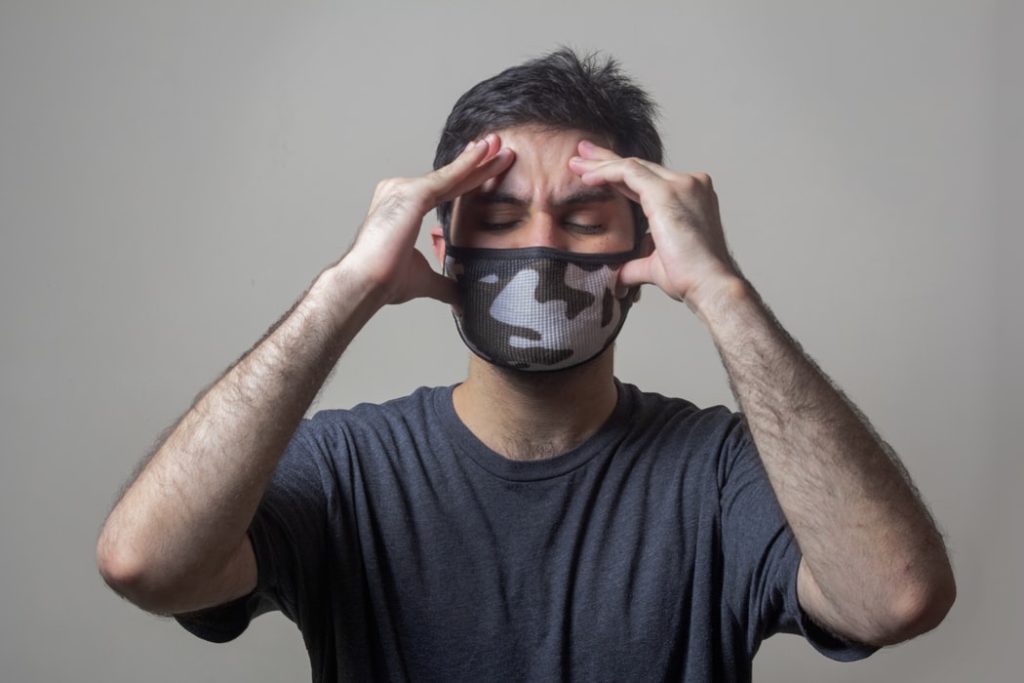Many of us are familiar with the discomfort and pain that’s associated with that throbbing nuisance we infamously call headaches. At times, a brand new day means a brand new headache location, that moves from your eye to your head and back again.
Even though there’s no way of getting around a headache, it could be helpful to identify which type of headache you have. This will help to pinpoint the triggers that are causing it (like caffeine, stress, or types of food).
Here are five types of headaches to look out for:
Tension headache
A tension headache is very common and is often triggered by stress. Instead of a throbbing pain, you may feel a dull, aching sensation over your head. This pain is often accompanied by tenderness and tightness around your neck, forehead, scalp or shoulder muscles.
According to Mayo Clinic, tension headaches are divided into two categories: episodic tension headaches, which can last from 30 minutes to one week and chronic tension headaches that can last for hours at a time.
Chronic headaches are determined by having a single headache for 15 days or more per month.
Cluster headache
This type of headache is characterised by a sharp piercing pain. Cluster headaches often occur around or behind one eye and affects one side of your face at a time, healthline explains. At times, redness or swelling can also occur on the side that’s affected along with nasal congestion and watery eyes.
These headaches can last from 15 minutes to three hours, and usually occur in a series of one to four headaches per day, generally around the same time each day.
Cluster headaches are most commonly experienced in autumn and spring, and can occur daily for months at a time. Even though doctors are not sure what causes these headaches, healthline observes that this type of headache is three times more common in men.
Migraine
Migraine pain can last for days at a time and is characterised as an intense pulsing sensation from deep within your head. It becomes extremely challenging to resume daily tasks once this pain strikes. The throbbing generally occurs on one side, and nausea and vomiting usually results.
Most people who suffer from migraines are sensitive to light and usually experiences symptoms relating to seeing stars, blind spots or shimmering lights before the migraine begins. These symptoms, or ‘ auras’, as healthline calls it, includes a tingling sensation on one side of your face, even though these symptoms are found to be similar to that of a stroke as well.
According to healthline, migraine attacks might run in your family, and women are more likely to develop a migraine than men. Those who suffer from post-traumatic stress disorder share that same risk. Make sure to look out for triggers such as dehydration, hormone fluctuations, sleep disturbances, skipping meals and exposure to chemicals.
Allergy or sinus headaches
This is referred to as a secondary headache because it shows that there is something else that’s happening in your body.
The pain from these headaches is often focused in your sinus area and in the front of your head. According to healthline, up to 90% of sinus headaches are actually migraine pain, and this is commonly misdiagnosed. If the trigger of your secondary headache is ongoing, it can become chronic. Treating the primary cause generally brings headache relief.
Sinus headaches cause deep and constant pain in your cheekbones, forehead, or the bridge of your nose, webMD explains.
Caffeine headaches
Caffeine affects blood flow to your brain, and having an excessive amount can aggravate a headache. When you are used to exposing your brain to a certain amount of coffee each day, you might get a headache if you don’t satisfy your coffee fix.
Not everyone who cuts back on caffeine will experience a withdrawal headache though. Keeping your caffeine intake at a steady level can help to prevent these headaches from happening.
Picture: Unsplash

